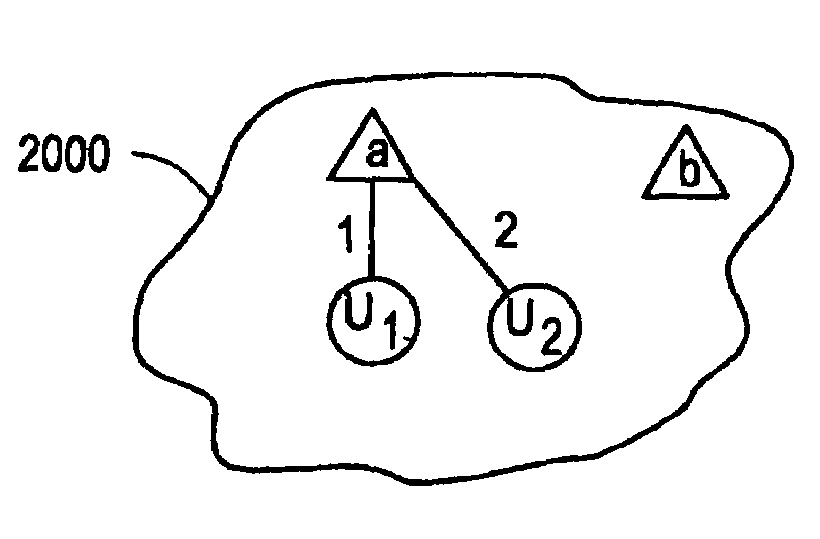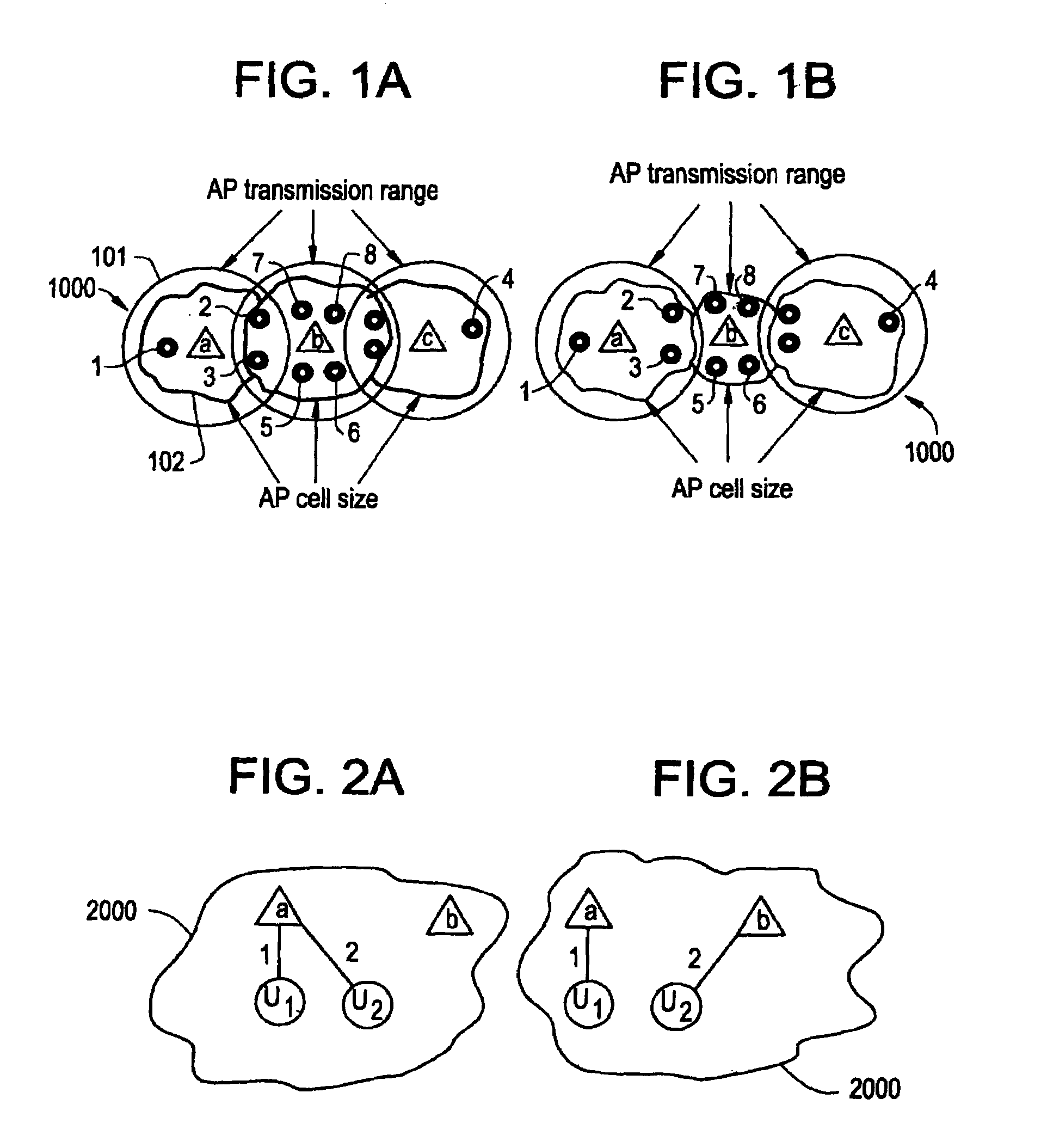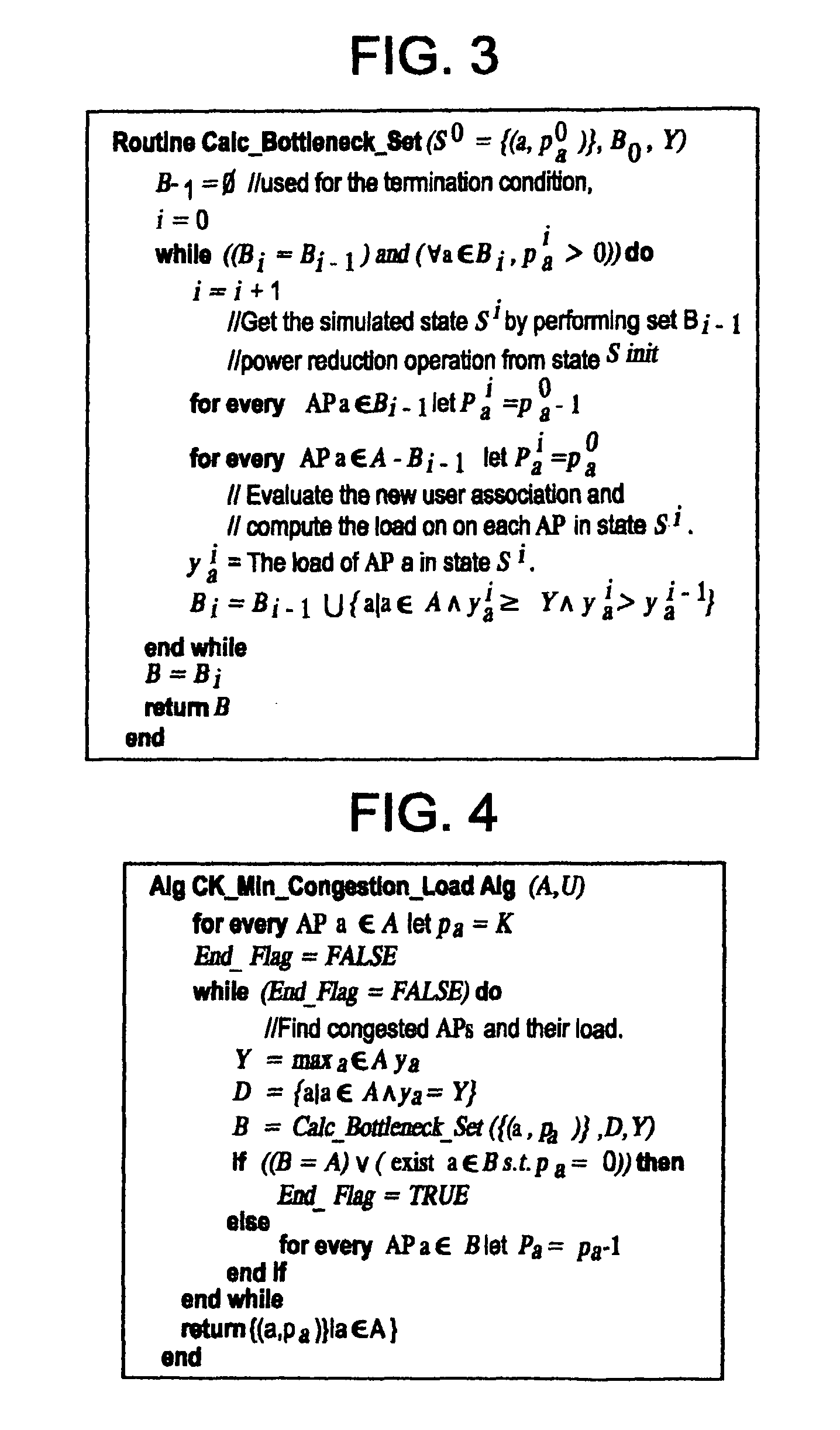Methods and devices for balancing the load on access points in wireless local area networks
a wireless local area network and load balancing technology, applied in power management, electrical equipment, radio transmission, etc., can solve the problems of undesirable load imbalance, traffic load is often unevenly distributed among aps, and undesirable load imbalance, so as to reduce the size of aps and achieve the effect of easy implementation
- Summary
- Abstract
- Description
- Claims
- Application Information
AI Technical Summary
Benefits of technology
Problems solved by technology
Method used
Image
Examples
Embodiment Construction
[0034]Referring again to FIG. 1(a), there is shown a WLAN 1000 with a set of APs, denoted by a-c. Though not shown, it should be understood that all of the APs a-c may be directly attached to a wired infrastructure, e.g., the Internet. Each AP a-c has a certain transmission range and it can serve only those users 1-8 within its range. Further, each AP a-c may be configured to use one of a plurality of transmission power levels. For the sake of simplicity, it can be assumed that the APs a-c are deployed to ensure a high degree of overlapping between their ranges so that every user 1-8 is covered by at least one AP even when all APs are transmitting at a minimal power level.
[0035]Further, it can be assumed that users 1-8 have a quasi-static mobility pattern. In other words, users can move freely, but they tend to stay in the same relative location for a long period of time. At any given period of time, each user 1-8 is associated with a single AP a-c. Each AP a-c periodically transmit...
PUM
 Login to View More
Login to View More Abstract
Description
Claims
Application Information
 Login to View More
Login to View More - R&D
- Intellectual Property
- Life Sciences
- Materials
- Tech Scout
- Unparalleled Data Quality
- Higher Quality Content
- 60% Fewer Hallucinations
Browse by: Latest US Patents, China's latest patents, Technical Efficacy Thesaurus, Application Domain, Technology Topic, Popular Technical Reports.
© 2025 PatSnap. All rights reserved.Legal|Privacy policy|Modern Slavery Act Transparency Statement|Sitemap|About US| Contact US: help@patsnap.com



